Omiš in Autumn, the Perfect Time to Visit Mountains, the Cetina and the Sea
October 15, 2021 – With local seafood currently at its best and cooler temperatures inviting runners, hikers and cyclists to this spectacular location, Omiš in autumn is one of the best destinations of the season.
When temperatures cool on the Croatian coast, the telltale signs of tourism start to fade. Villages that were full of people in summer become very still. Only in the larger places does life go on unaffected.
The seaside city of Omiš is one such place. The charming Omiš Old Town streets hold their special atmosphere throughout the year. Autumn, in particular, is a favourite time for visitors to come.
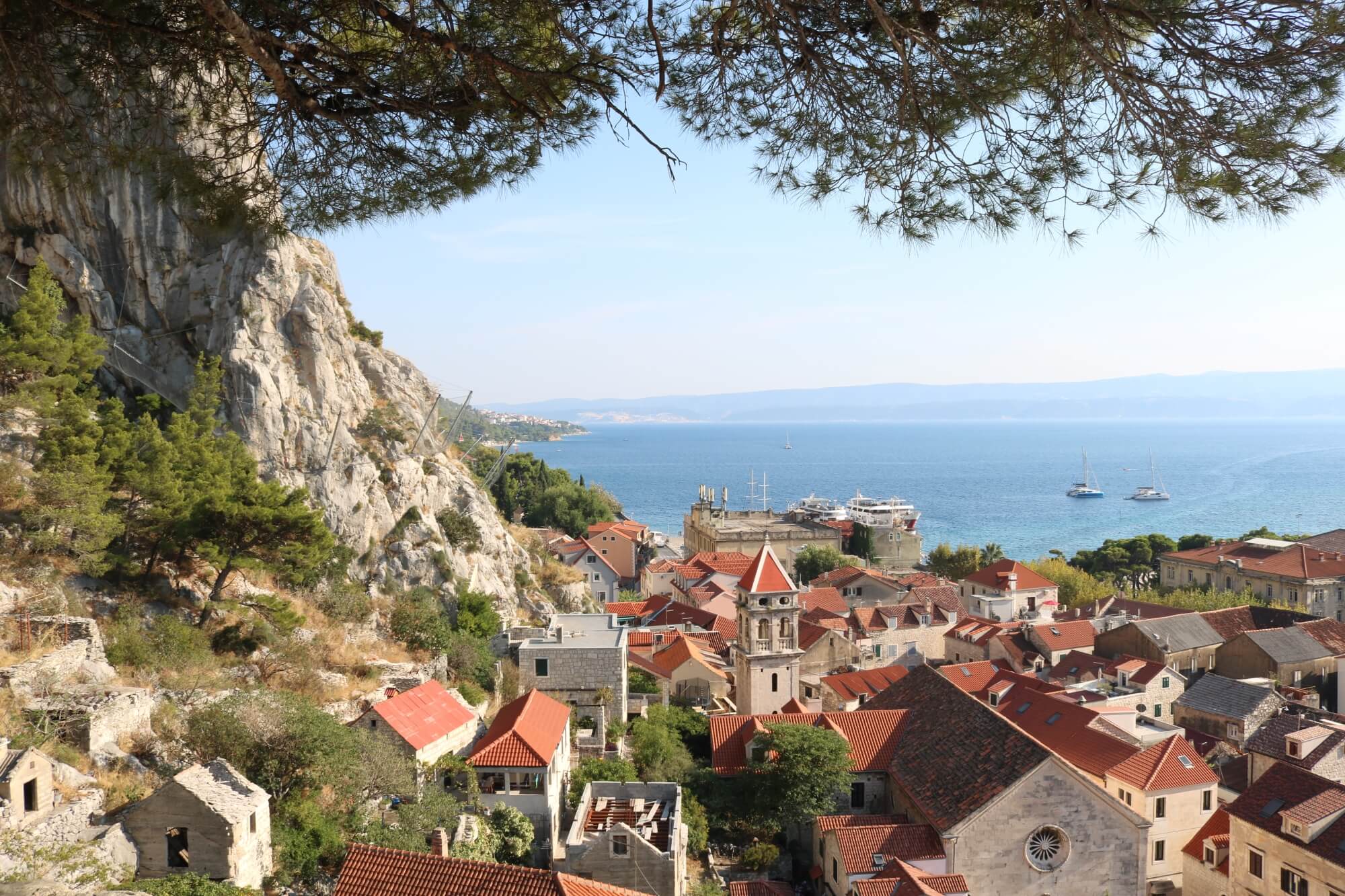
Arguably, this is the time of year when Omiš's famous and distinct cuisine is at its best. Omiš's special bounty of seafood comes from its position on the Cetina river. The best-tasting Mediterranean fish and shellfish love these conditions, where the freshwater meets the saltwater. And, in autumn, the prawns, scampi and calamari are at their biggest and best. The restaurants of Omiš offer fresh, seasonal specialties every day. Their tables are taken by relaxed visitors from all over the region, drawn to the city now the summertime rush has subsided.
 Seafood is an autumn specialty at sister Omiš restaurants Puljiz and Bastion. © Marc Rowlands
Seafood is an autumn specialty at sister Omiš restaurants Puljiz and Bastion. © Marc Rowlands
But, in the hills above and behind Omiš, and along the long promenades of the Omiš riviera, different kinds of visitors can be found. The cooler temperatures of autumn are perfect for cycling, running, hiking and walking.
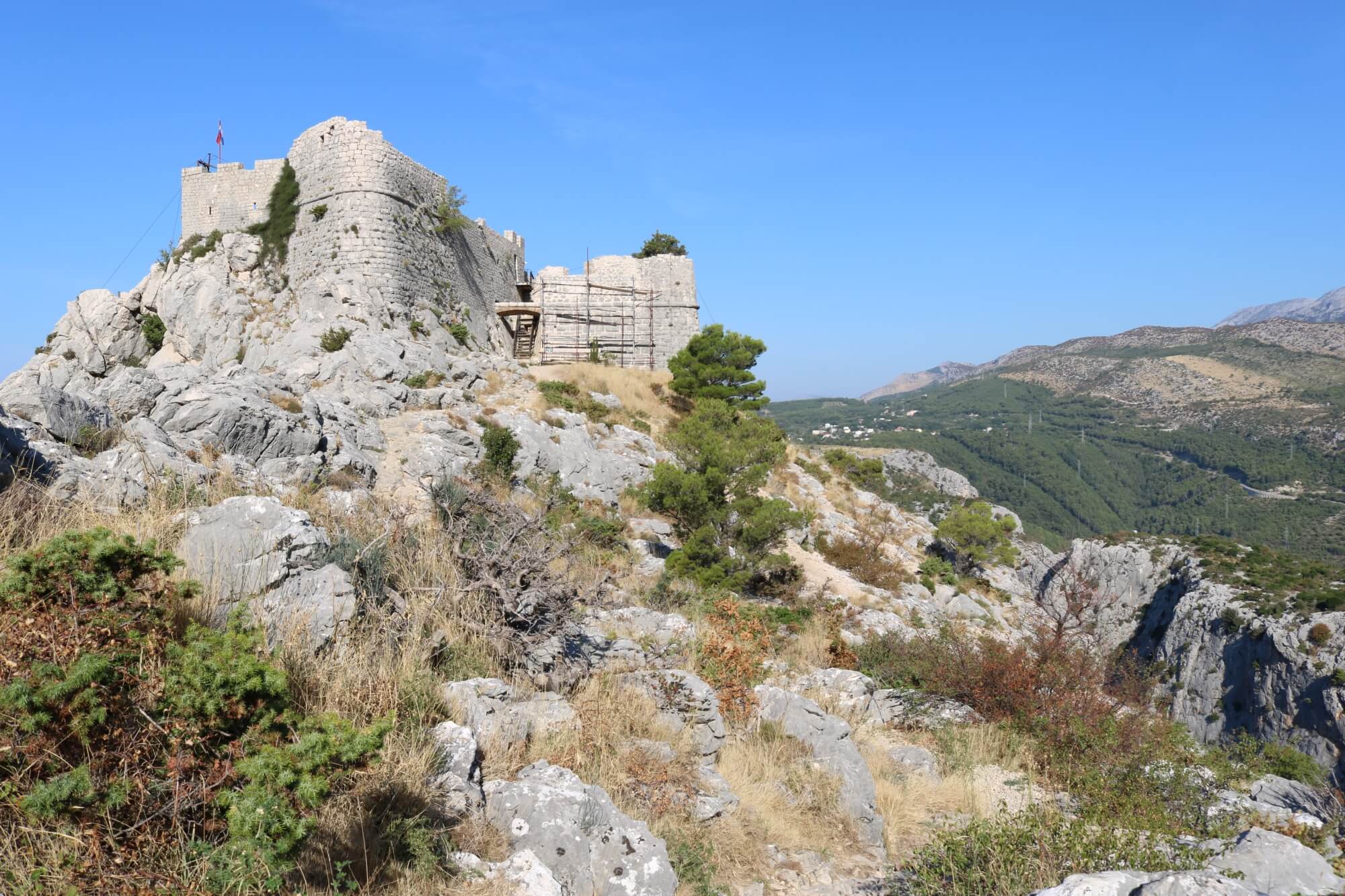
Sitting 262 metres above the city, the 15th century Starigrad Fortress is a mildly challenging hike. But, even older children can easily manage it. And the views from the top are incredibly rewarding. Autumn's cooling winds blow along the water surface, cleaning the vista. You can see so much detail on the islands opposite Omiš when the air quality is like this.
For those who prefer sport and recreation of a different kind, autumn in Omiš holds four of the city's most eagerly anticipated challenges
Omiš in Autumn: Dalmatia Ultra Trail
 Omiš in Autumn © Dalmatia Ultra Trail
Omiš in Autumn © Dalmatia Ultra Trail
With between 60% and 80% of its entrants coming from overseas, Dalmatia Ultra Trail is among the most internationally famous of all Croatia's cross country runs. And for good reason. The scenery is spectacular. There are three route options, allowing the race to be accessible to runners of varying abilities.
Mountain Dut
Starting from the Roman town of Solin, just north of Split, Mountain Dut is the biggest challenge of this Dalmatia Ultra Trail. On a course with a total distance of 122 km, runners will ascend to Putalj and Klis, site of the famous fortress, crossing along the Dinaric Alps before dropping down to Gata in the Omiš hinterland. From there, they drop down into the spectacular Cetina river valley and run parallel to the river until Kostanje.
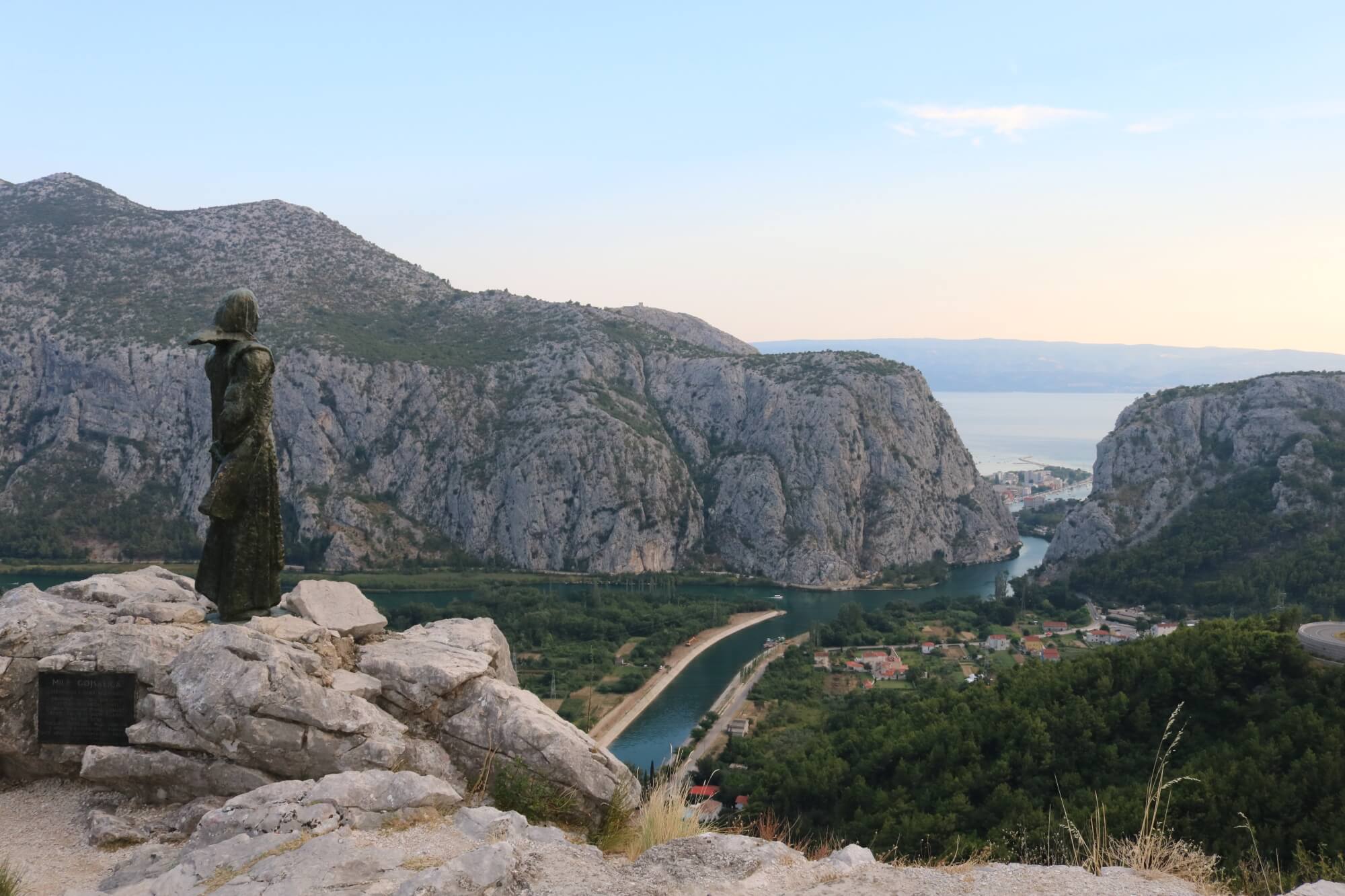
Returning up into the hills to visit the traditional village of Zadvarje, the trail next takes runners down to beautiful Brela. Runners will pass by beautiful Brela beaches, then those of the Omiš riviera villages Pisak, Marušići, Mimice and Medići. Then, it's back up to the final stretch of hills, visiting the old village of Lokva Rogoznica on the way, before finally descending to Omiš.
Mountain Dut 2021 starts on Friday 15th October at 9pm from Solin. Trail runners have 32 hours to complete the course. Each finisher will be awarded with 5 ITRA qualification points.
 Omiš in Autumn © Dalmatia Ultra Trail
Omiš in Autumn © Dalmatia Ultra Trail
Sea Dut
At 56km in length, Sea Dut offers a challenging trail set before the entire Makarska and Omiš riviera coastline. Starting in Makarska, runners rise up to the village of Kotišina, famous for its botanical gardens and castle. Thereafter, they ascend Biokovo mountain, the trail reaching almost 875 metres above sea level. They stay atop the hills all the way to Brela, where they drop down to the beach. Thereafter, they take the same course as Mountain Dut, past Pisak, Marušići, Mimice and Medići, up to Lokva Rogoznica, then down to Omiš.
Sea Dut 2021 starts on Saturday 16th October at 8am from Makarska. Trail runners have 15 hours to complete the course. Each finisher will be awarded with 3 ITRA qualification points.
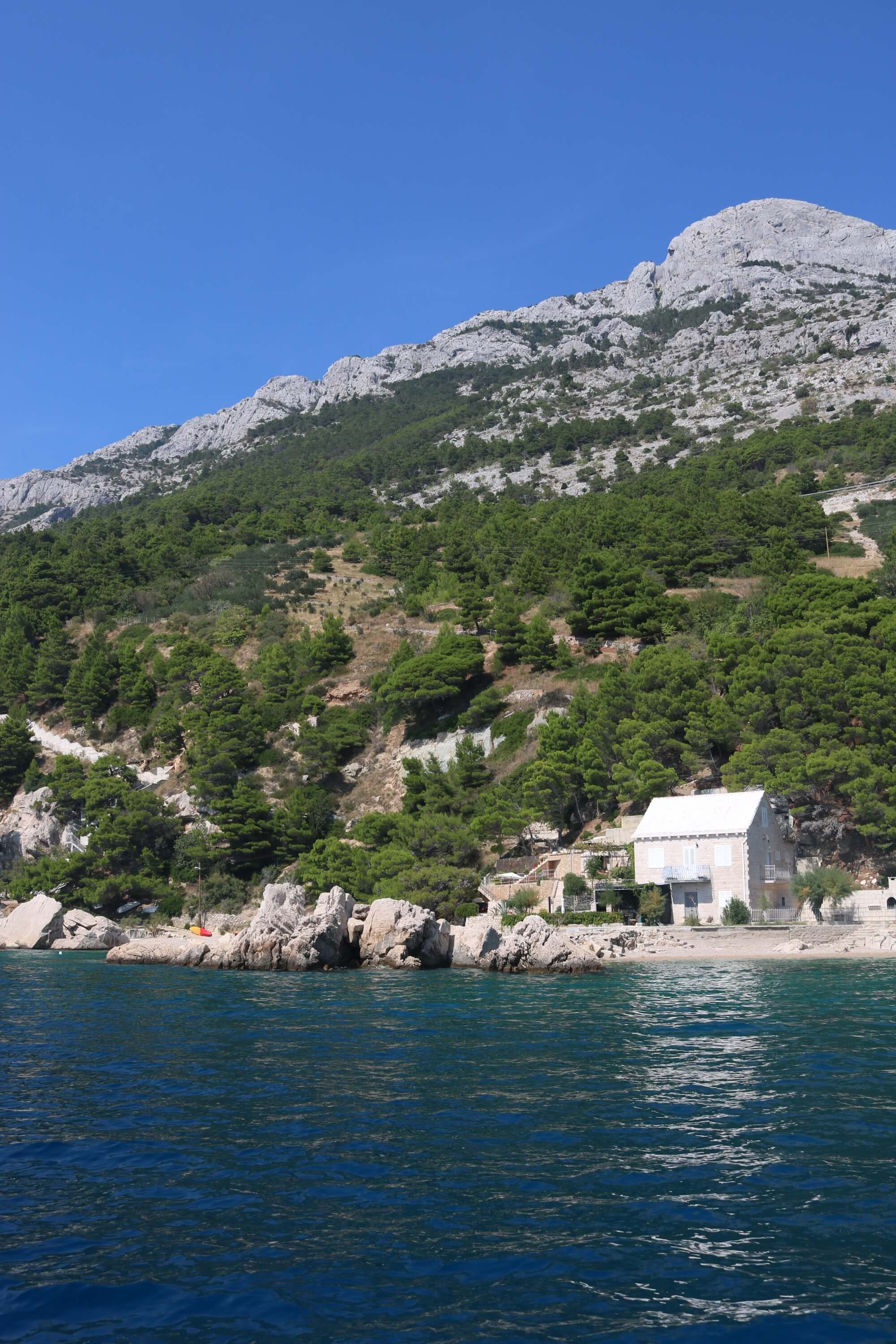
Ethno Dut
With a total distance of 18km, Ethno Dut is the most accessible of the Dalmatia Ultra Trails here. Starting in Dugi Rat, runners make a moderate ascent into the hills of just under 400 metres above sea level. They maintain roughly the same altitude for the entire trail, passing Jesenice and Tugare, before dropping down into Omiš.
Ethno Dut 2021 starts on Saturday 16th October at 1pm from Dugi Rat. Trail runners have 5 hours to complete the course. Each finisher will be awarded with 1 ITRA qualification point.
Omiš in Autumn: Omiš Half Marathon
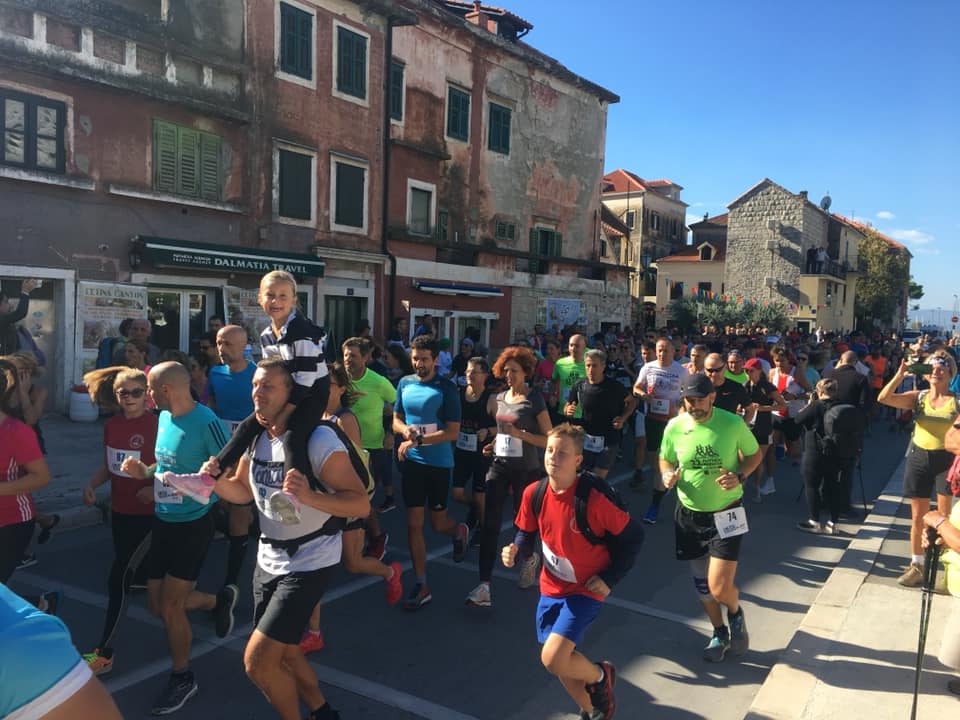 Omiš in Autumn © Omiš Half Marathon
Omiš in Autumn © Omiš Half Marathon
With a backdrop of mountains and the Cetina river, the half marathon in Omiš is perhaps Croatia's most spectacular. Where else can you run a virtually flat course with such scenery accompanying you?
Of course, the striking route is facilitated by following the Cetina river canyon. When doing so, runners pass some of the best rafting, kayaking, trekking, hiking and free-climbing locations in Croatia.
In 2021, the event again has two races - the half marathon and a recreational 6 kilometre race. Both take place within the Cetina river canyon.
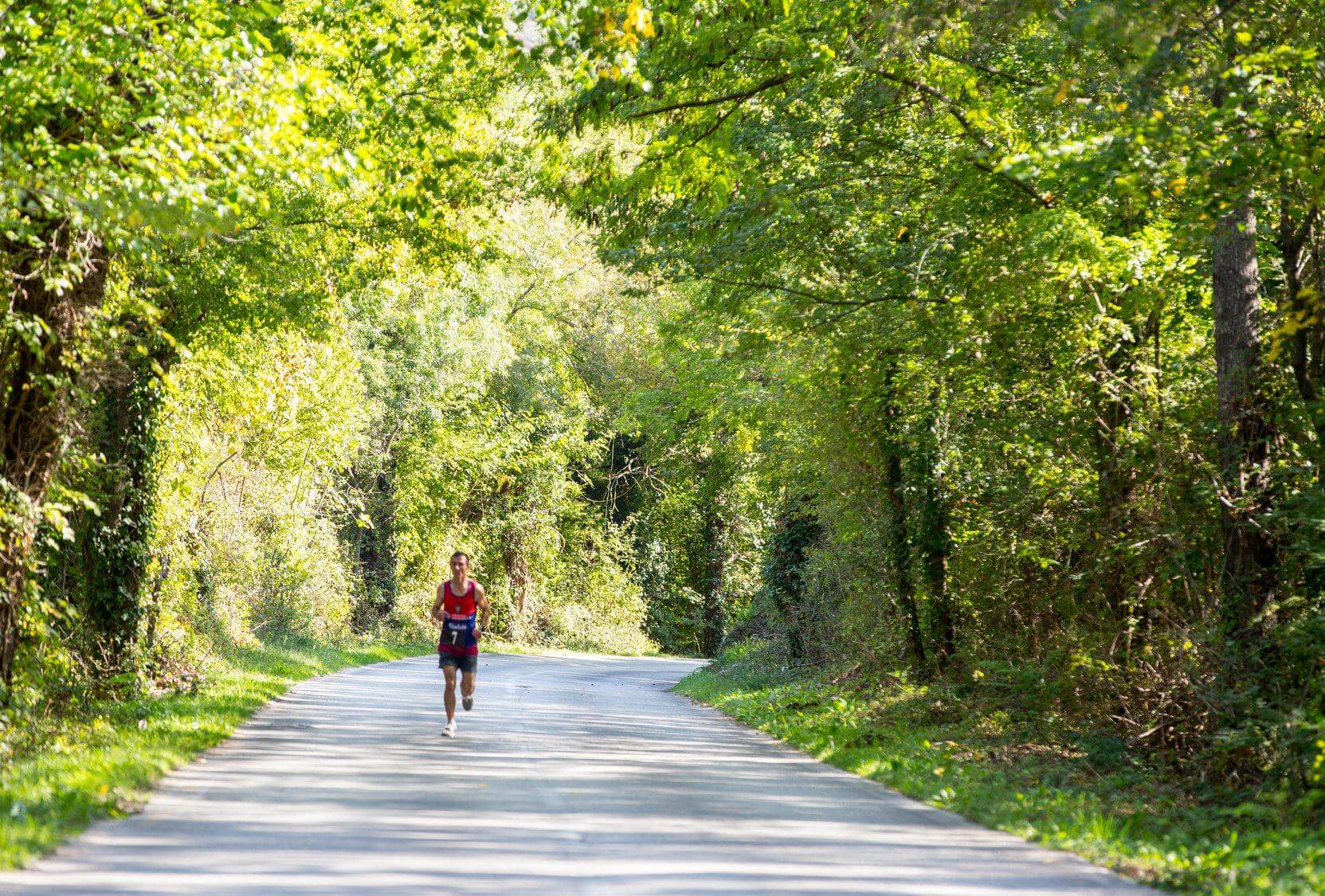 © Omiš Half Marathon
© Omiš Half Marathon
The Omiš Half Marathon takes place on Saturday 23rd October 2021.
You can register here and entries will be accepted in person between 8 am - 9 am on the day of the race. For more details, check the event's Facebook page.
UEFA Futsal Champions League 2021
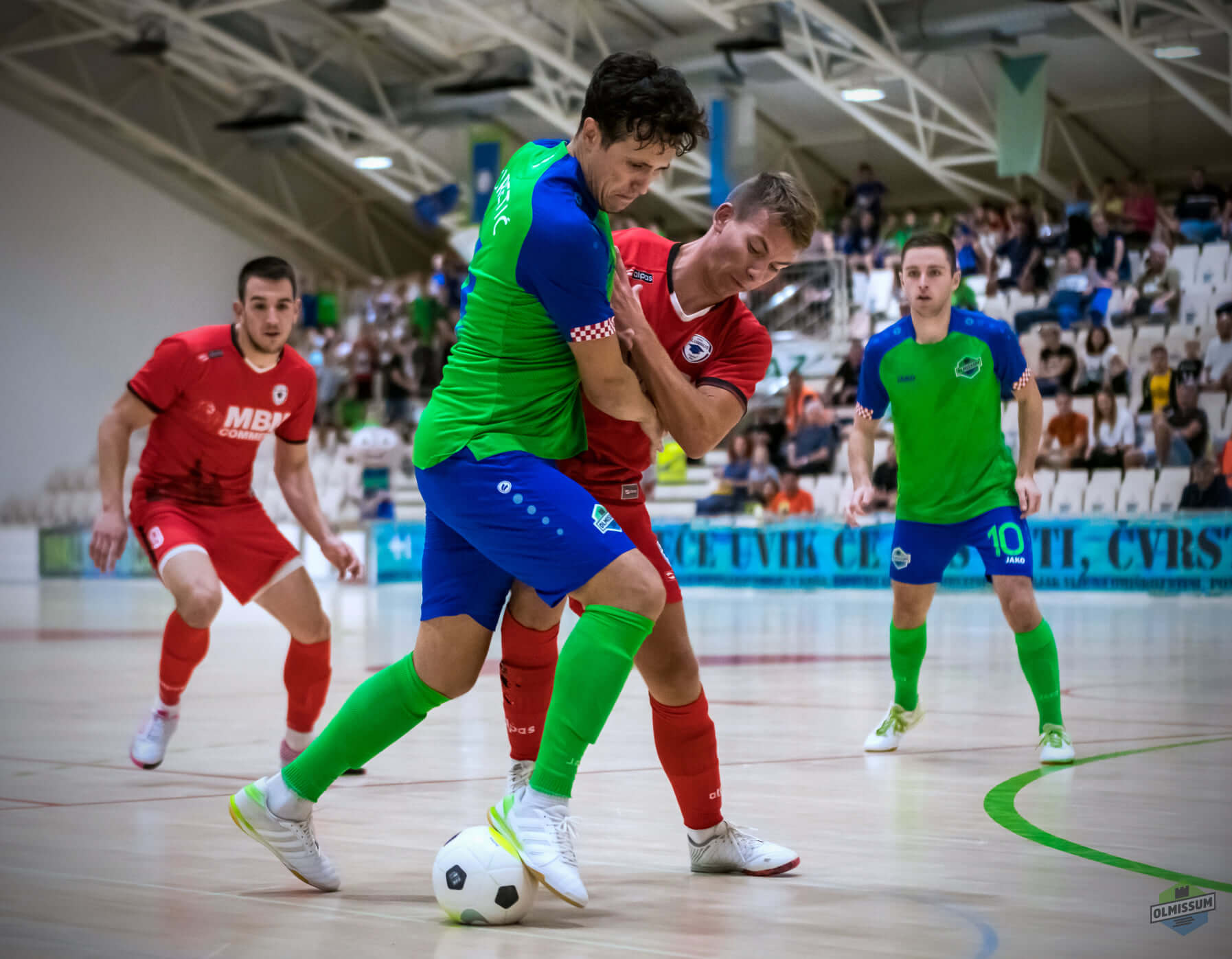 Zeleno Plavi © MNK Olmissum
Zeleno Plavi © MNK Olmissum
With the tournament celebrating its 20th anniversary in 2021, there's no better time for the Fifa accredited UEFA Futsal Champions League to be coming to Omiš. Better still, the hometown Futsal team, MNK Olmissum are the current national champions. They won both the cup and the league in the 2020/2021 season!
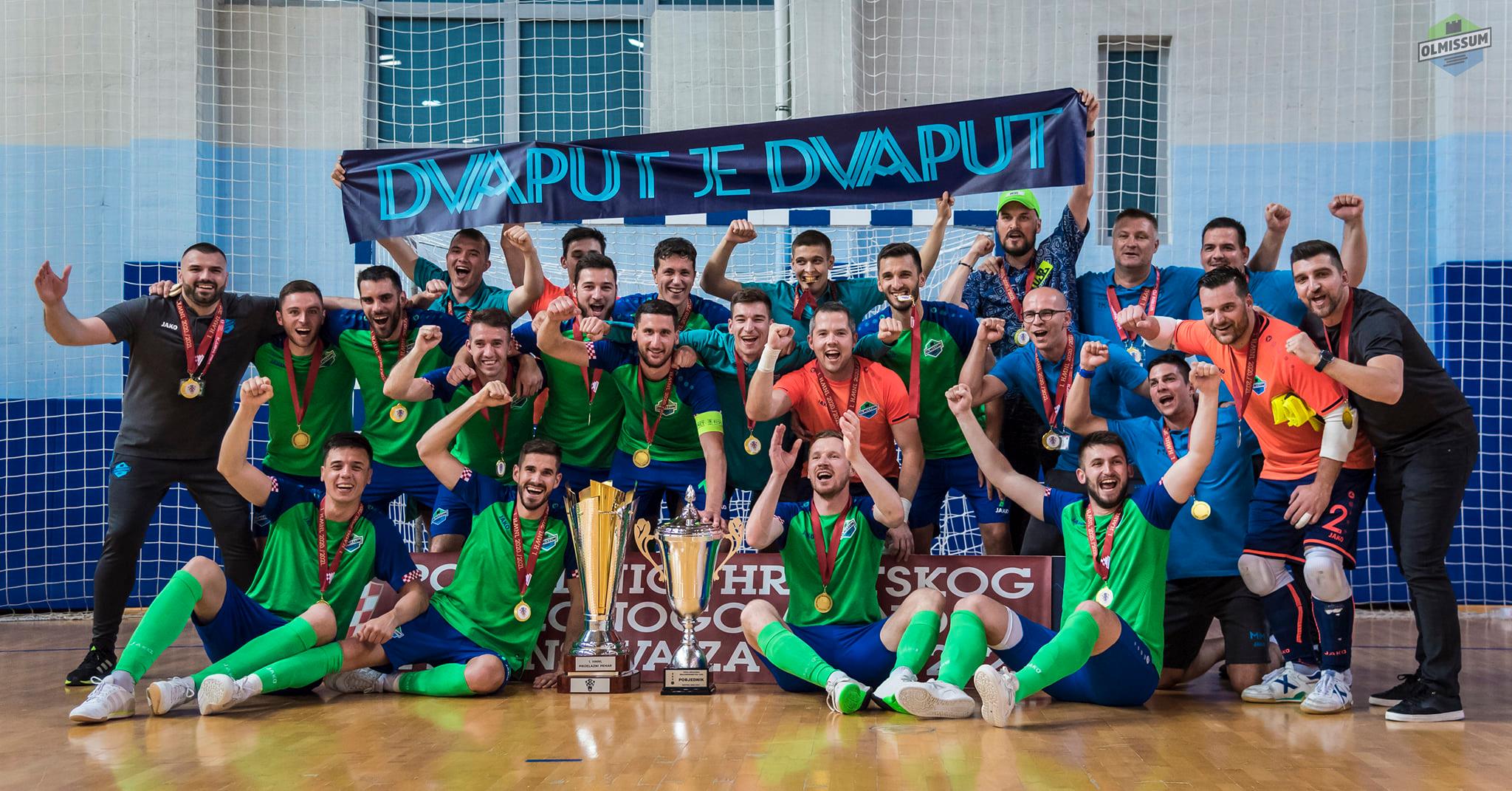 Champions! © MNK Olmissum
Champions! © MNK Olmissum
It's been two decades since a Croatian team reached the semi-finals of the tournament. Currently, MNK Olmissum are ranked within the top 16 of all European futsal clubs. To proceed in the competition, the hometown heroes will have to come top of their group. They face opponents Leo (Armenia), Diamant Linz (Austria) and KMF FON (Serbia). They will host the group at their home ground of Ribnjak, Omiš between October 26 and 31. The matches will be televised, but what better way to enjoy than in-person?
Omiš in Autumn: Dalmatian Trail League - Mosor Grebbening
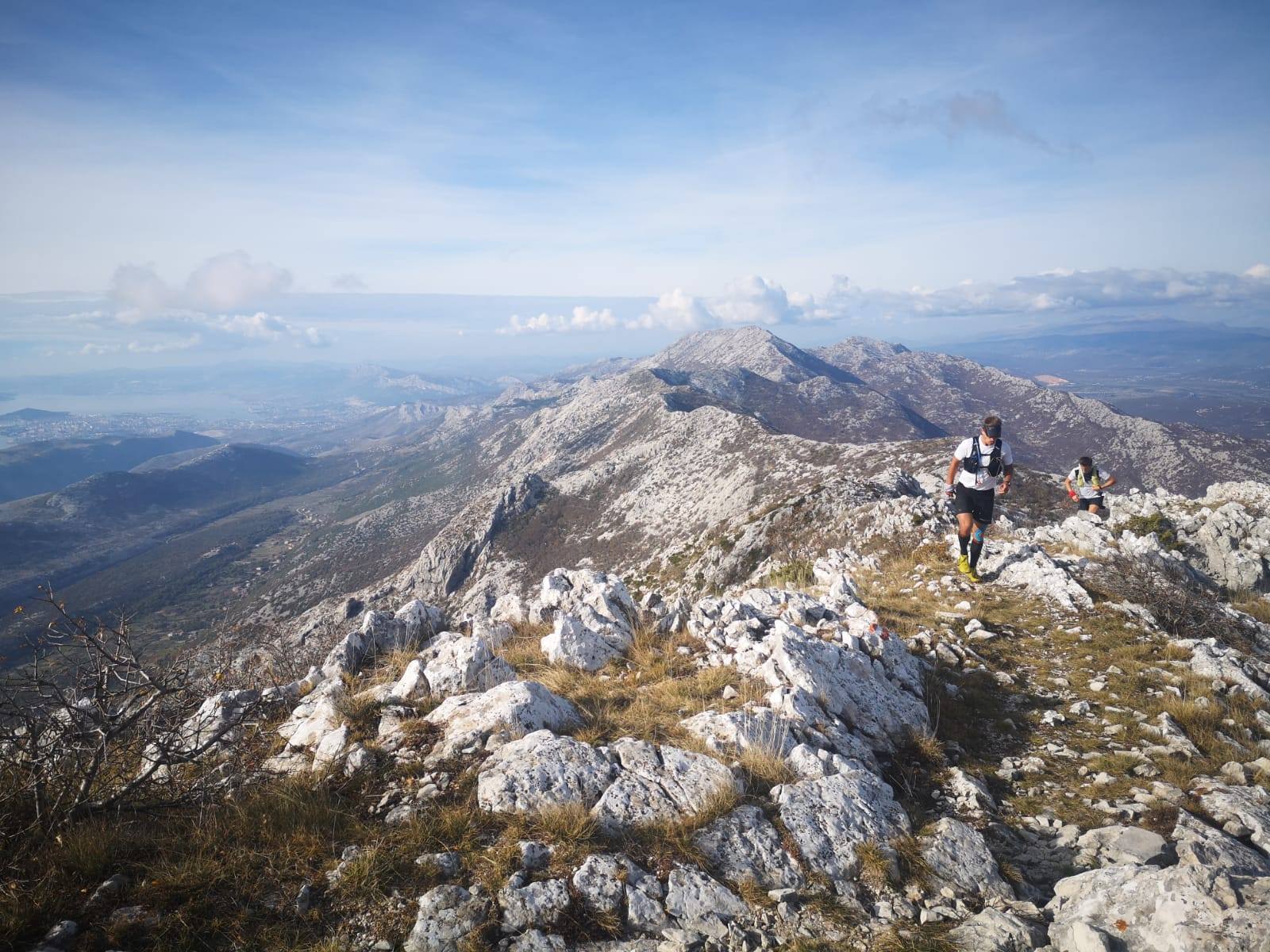 © Marko Herman
© Marko Herman
The spectacular section of the Dinaric Alps that lies to the west of Omiš is known as Mosor. It starts near Klis, above Split, and runs to the Cetina river. Mosor Grebbening is a series of trail runs through this epic mountain terrain. In 2021, it is the 9th round of the famous Dalmatian Trail League.
The event contains a choice of three adult trails and one children's race. All of the races start or end in the village of Gata, in the Omiš hinterland.
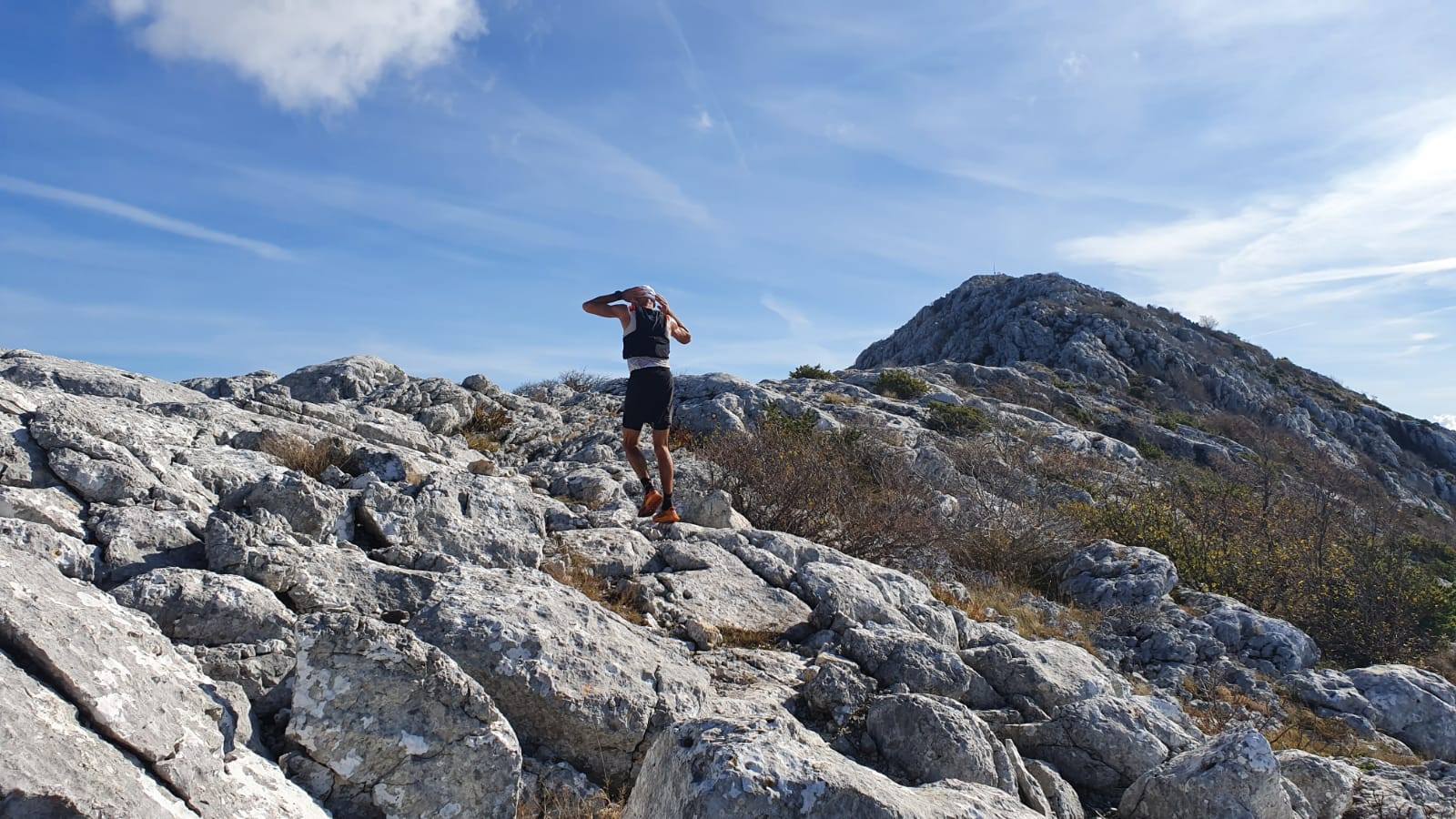 © Ivo Pešić
© Ivo Pešić
Starting in Klis and finishing in Gata, Sivonja is the toughest trail. It is 37.50km in length and has a 2590m ascent. Runners have 12 hours to complete the course.
Still a tough ask, Tovar is the slightly easier choice. At 17km and with an ascent of 1270m, you're given 8 hours to complete the trail.
At 8 kilometres in length and with a 400 metre ascent, Pule is the most accessible race. It should take way less than the 4 hours allocated. The children's race is an 800 metre dash around Gata.
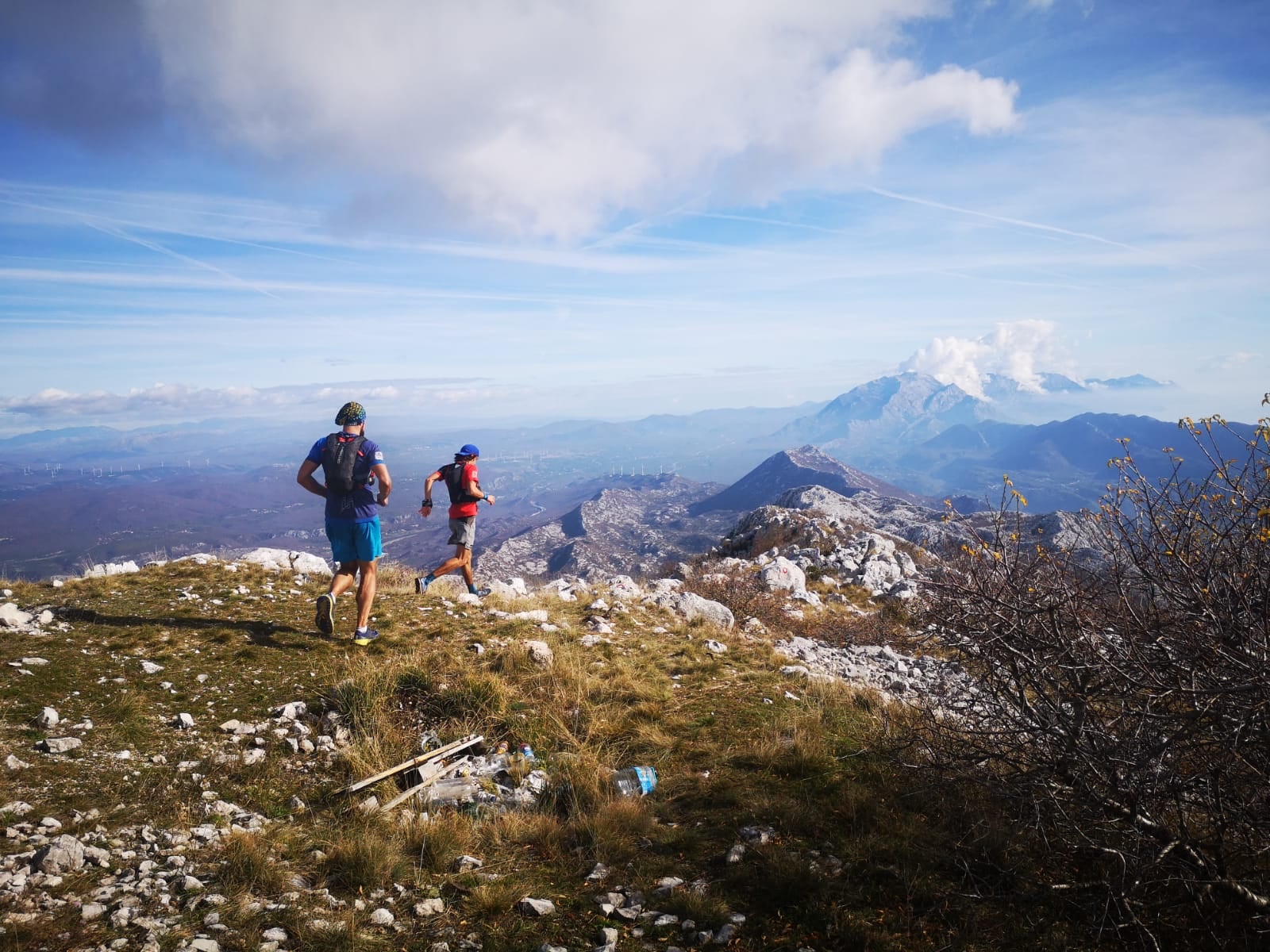 © Marko Herman
© Marko Herman
Mosor Grebbening takes place on Saturday 13 November 2021.
Registration for the races: exclusively via the online registration form here.
Waste Separation in Dalmatia Lowest in Croatia, Split Worst
October 12, 2021 - Waste separation is traditionally lowest in southern Croatia, with the city of Split infamously known as the worst.
Annual reports on waste collection in Croatia issued by the Ministry of Economic and Sustainable Development regularly present sad news about Dalmatia. Namely, it shows a severe civilizational lag in the south compared to the north, reports Slobodna Dalmacija.
Statistics show that Dalmatia, together with Lika and Brod-Posavina County, is at the bottom of Croatia when it comes to waste separation. But there is tourism here, and the state invests in infrastructure and development, so it makes no sense to compare it with poorer parts of Croatia and where life is objectively more challenging.
Data on waste separation collection in 2020 show that Split is in last place among the big cities in Dalmatia. Dubrovnik has a collection rate of 11.16 percent, followed by Sibenik, which last year still rose with a rate of 6.55 percent. On the other hand, Zadar fell from 7 percent to 6.20 percent last year, while Split is at the bottom of the scale with 5.80 percent. Compared to 2019, Split even improved because it had a disgraceful 3.74 percent two years ago, but even with that miserable shift, it did not move further than the last place.
Moreover, when we move outside the framework of Dalmatia, Split is convincingly in last place among the big cities in Croatia regarding waste separation. This year, Rijeka recorded 14.21 percent, while Zagreb separates 29.74 percent, and Osijek as much as 38.69 percent, which is an improvement from 28.67 percent in 2019.
The record holders are again in Međimurje. Čakovec is at 48.95 percent, and some of their municipalities, such as Belica, separate 79.76 percent of waste. In fact, in Međimurje County, eight municipalities separate more than 60 percent of waste, above the required EU standards.
In terms of municipal waste management, as in 2019, the highest rates of recovery and recycling of waste are still recorded in Međimurje County (58 percent), Varaždin County (53 percent) Koprivnica-Križevci County (50 percent), and the City of Zagreb (48 percent).
On the other hand, the counties where waste is least recycled are Zadar County (20 percent) and Lika-Senj County (20 percent). They are followed by Brod-Posavina (23 percent), Split-Dalmatia (24 percent), Šibenik-Knin (25 percent), and Dubrovnik-Neretva County (25 percent).
Another indicator that shows just how bad it is in Dalmatia is shown in the example of Zadar County, where most construction is currently underway in Croatia. Unfortunately, Zadar County is at the bottom of the scale and the most economically underdeveloped part of Croatia.
Most municipal waste in Croatia was disposed of in Zadar, in the Diklo area, as much as 320,905 tons. It should be emphasized that this is almost twice as much as Zagreb's Jakuševac, where 189,975 tons were disposed of, or Split's Karepovac, which is third on the list where 116,876 tons were disposed. Much less mixed municipal waste is disposed of in Zadar than in Zagreb and Split, but it is not explained what the 247,651.71 tons of 'other waste' disposed of in Diklo in 2020 refer to.
The director of Zadar's "Čistoća" Ivan John Krstičević said that "this is a large amount of excavation that ends at two landfills in that landfill."
Last year, 103,015 tons of mixed municipal waste were disposed of in Karepovac; in fact, almost everything that ended up there falls into that category.
It cannot be said that nothing happens in Dalmatia when it comes to waste, but it is going very slowly. In Zadar, Diklo should stop being a landfill, fortunately for the surrounding locals, when the Biljana Donja Waste Management Center starts operating, and commissioning is expected in the middle of next year. At the end of this year, the CCE Bikarac should start trial work in Šibenik-Knin County.
Split is also at the bottom. The Center for Waste Management in Split-Dalmatia County in Lećevica has been questioned by associations, locals, and some scientists as environmentally unacceptable. Still, it is equally questionable whether it will ever be built. Big money was spent, jobs were created, people were employed in the county’s “Regional Clean Environment Center.” Some retired from that position, but nothing has moved in two decades without anyone responding.
Presenting the Municipal Waste Report at a press conference, Minister of Economy and Sustainable Development Tomislav Coric boasted that Croatia ended last year with 41 percent of separated municipal waste, saying it was an increase of four percent compared to 2019. But he noted that last year was a “pandemic year” marked by a reduction in the work of the service sector.
In other words, there was much less tourism last year than in previous years, so the results on that success are relative. This is especially true for Dalmatia. As a result, the amount of waste is smaller, but, unfortunately, the backlog in separation and recycling is equal.
In Split-Dalmatia County, there are five municipalities with no waste separation (i.e., 0.00 percent), namely Jelsa, Prgomet, Seget, Sućuraj, and Šolta, while Hrvace is at 0.05 percent of separation, and Muć at 0, 06 percent. According to them, Vrgorac is "advanced" with 0.16 percent.
In Šibenik-Knin County, Kistanje, Kijevo, Ervenik, Civljane, Murter and Promina are at "zero", and in Zadar County, Lišane Ostrovičke, Pakoštane, Polača, Povljana, Sali and Stankovici do not separate anything. In Dubrovnik-Neretva, the municipalities of Janjina, Kula Norinska, Lumbarda, Opuzen, Pojezerje, Smokvica, Ston, Zažablje are without separation.
Of course, there are brighter examples, like Lastovo, in Dubrovnik-Neretva County, which reached an incomprehensible 40.82 percent for Dalmatia. There, waste separation actions were initiated by associations, the Municipality of Lastovo, the local Komunalac, the Lastovo Islands Nature Park, and obviously, the results were not lacking. For several years in a row in Split-Dalmatia County, Omiš has been praised. This year, it reached 20.70 percent, and Dugi Rat equaled it, which, therefore, shares first place in the largest Dalmatian county.
But when you look at the waste management map in the report, it turns out that the northern regions are more advanced in waste recycling. For example, no southern part of Croatia has a composting plant. In fact, in the results for last year, we cannot say that tourism is an aggravating circumstance for Dalmatia, which otherwise produces a significant amount of waste because it was significantly less than in previous years.
It would be unfair to say that nothing is being done. Split has reduced the amount of waste disposed of at Karepovac, and compared to 2018; it has doubled the amount of waste collected separately from 1,614 to 3,136 tons. It has also increased the number of stationary and mobile recycling yards. But that’s all too little to avoid the penalties cities have to pay if they don’t reach specific recycling percentages.
Namely, according to the "Decree on Municipal Waste Management," cities and municipalities are obliged to pay an incentive fee for reducing the amount of mixed municipal waste. It is a measure that encourages local self-government units to reduce the amount of mixed municipal waste. As confirmed by the Fund for Environmental Protection and Energy Efficiency, the Fund collected HRK 46.9 million from municipalities and cities in Croatia last year because, in 2019, they did not separate enough mixed municipal waste. Thus, the City of Zagreb had to pay HRK 8.8 million, Osijek HRK 922 thousand, and Rijeka HRK 1.6 million. Of the Dalmatian cities, Split had to pay 3.2 million kuna, Zadar paid penalties of 1.6 million kuna, Šibenik 825 thousand kuna, and Dubrovnik 944 thousand kuna.
It is unknown how much Dalmatian and Croatian cities and municipalities will pay for 2020 because last year's data will be calculated at the end of 2021 after receiving a report from the relevant Ministry.
According to the World Bank, Croatia generally lags behind European waste management directives, so the question is whether it will avoid penalties that would amount to 42,000 euros a day. In 2020, Croatia was supposed to reach 50 percent separate separation, and last year the country ended up with 41 percent. However, it was a pandemic year, as Minister Ćorić admitted. Otherwise, it isn't easy to approach the set norms. For some, the question is whether Croatia will fulfill them, as is the case with Karepovac, given the "Lecevica case."
Since the population's education is emphasized as one of the goals, it is not out of place to know that Čistoća Split has spent around one million kuna on education in the last two years.
Given that the new Split government, led by Mayor Ivica Puljak, has announced a cleaner Split as one of its strategic goals, we will see if Split can move from the infamous place of the worst city when it comes to waste management.
For more on lifestyle in Croatia, follow TCN's dedicated page.
Dalmatian Wine Icons: Taste the Best Dalmatian Wines
October 10, 2021 - Dalmatian Wine Icons is a prestigious wine event where Dalmatian winemakers present exclusively their best wines. It is a one-day promenade tasting that, due to its limited duration, winemakers from all parts of Dalmatia bring only one or a maximum of two labels, the ones they are most proud of.
Dalmatian Wine Icons is a prestigious wine event where Dalmatian winemakers present exclusively their best wines. It is a one-day promenade tasting that, due to its limited duration, winemakers from all parts of Dalmatia bring only one or a maximum of two labels, the ones they are most proud of, reports Turističke Priče.

Photo: Dalmatian Wine Icons
By presenting only special wines, the so-called cellar flagships, winemakers want to draw the attention of the public and the media to the exceptional concentration of quality that is more than evident in Dalmatia in recent years, and then to varietal and stylistic diversity and wine authenticity.
Namely, in Croatia, no region has the varietal and stylistic richness of Dalmatia, because the number of indigenous varieties in Dalmatia exceeds the total number of indigenous varieties of all other regions together, and confirmation of the highest quality of Dalmatian wines comes from renowned international competitions such as British Decanter. more of the brightest medals than any other region from this part of Europe.
Therefore, the manifestation of the Dalmatian wine icon is an exciting event of an exclusive character where visitors are given the opportunity to taste in one place the most important wines of Dalmatia, which dissolve them and which the wine authors tell them personally.
Promenade tasting will be held on October 23 at the area restaurants Campus of the University of Split, and the event will be opened from 12 to 19 h.
The day before the promenade tasting, on October 22, wine workshops will be held in the same space, led by renowned lecturers - Branimir Vukšić, Manuela Plohl, Kruno Filipović, Monika Prović, and Saša Špiranec.
![]()
Photo: Dalmatian Wine Icons
Workshop program
Friday, 10/22/2021
- 14: 00h Dalmatian rosé - Dalmatia is Croatian Provence; Branimir Vuksic
- 15:30 Aged white wines of Dalmatia of collector's value; Monika Prović
- 17: 00h Small varieties with great potential - indigenous varieties with the authentic stamp of Dalmatia; Kruno Filipović
- 18:30 Plavac, babić and tribidrag / crljenak - three black locomotives; Saša Špiranec
Saturday, 10/23/2021
- 14: 00h Decanter laureates - wine tasting that won gold and platinum medals at the last DWWA competition; Manuela Plohl
The complete organization and protocols are harmonized with sanitary and epidemiological standards, to make visitors feel safe.
Croatian wines and grapes are among the best in the world, and you can find more information about them in Total Croatia’s Guide to Croatian Wine HERE.
For more on lifestyle, follow TCN's dedicated page.
Arable Land Prices Increase by HRK 746 per Hectare on the Year
ZAGREB, 1 Oct 2021 - The average price of arable land in Croatia in 2020 amounted to HRK 25,930 per hectare, which is HRK 746 more than in 2019, the Croatian Bureau of Statistics (DZS) reported on Friday.
The statistics indicate that in 2020 the average price of meadows increased by HRK 3,326 to HRK 17,289 per hectare and of pastures by HRK 2,193 to HRK 15,651 per hectare.
In the Pannonian Croatia, the average price of arable land purchased in 2020 was HRK 26,416 per hectare, of meadows HRK 18,868 per hectare and of pastures HRK 10,720 per hectare.
The average price of arable land along the Adriatic coast was HRK 33,640 per hectare, of meadows HRK 13,957 per hectare and of pastures HRK 20,423 per hectare.
In northern Croatia, the average price of arable land was HRK 22,518 per hectare, the average price for meadows was HRK 18,981 per hectare and for pastures HRK 16,986 per hectare.
The DZS notes that its data is based on Tax Administration data on farmland purchases.
(€1 = HRK 7.491)
For more news, CLICK HERE.
New Bronze Sculpture of Šibenik Unveiled In the City
October 1st, 2021 - As in Zagreb, Split, and other Croatian cities, a new bronze sculpture of Šibenik has been officially unveiled and warmly received by city residents. It is a scale sculpture that serves as a miniature of the Dalmatian city, and now adds to its various attractions.
As reported by Slobodna Dalmacija, eight hundred kilograms of clay, 1.5 tons of bronze and almost two years of hard work, sculpting, studying the theory of space, mathematics, and geometry were all needed by the Zagreb painter-graphic artist with Šibenik address Zvonimir Vila to create his city plan in volume, a new bronze sculpture of Šibenik called Šibenik stina. It was placed on the square in front of Krešimir's home where the city administration is located, and it was ceremoniously opened on Wednesday night on the Day of the City of Šibenik.
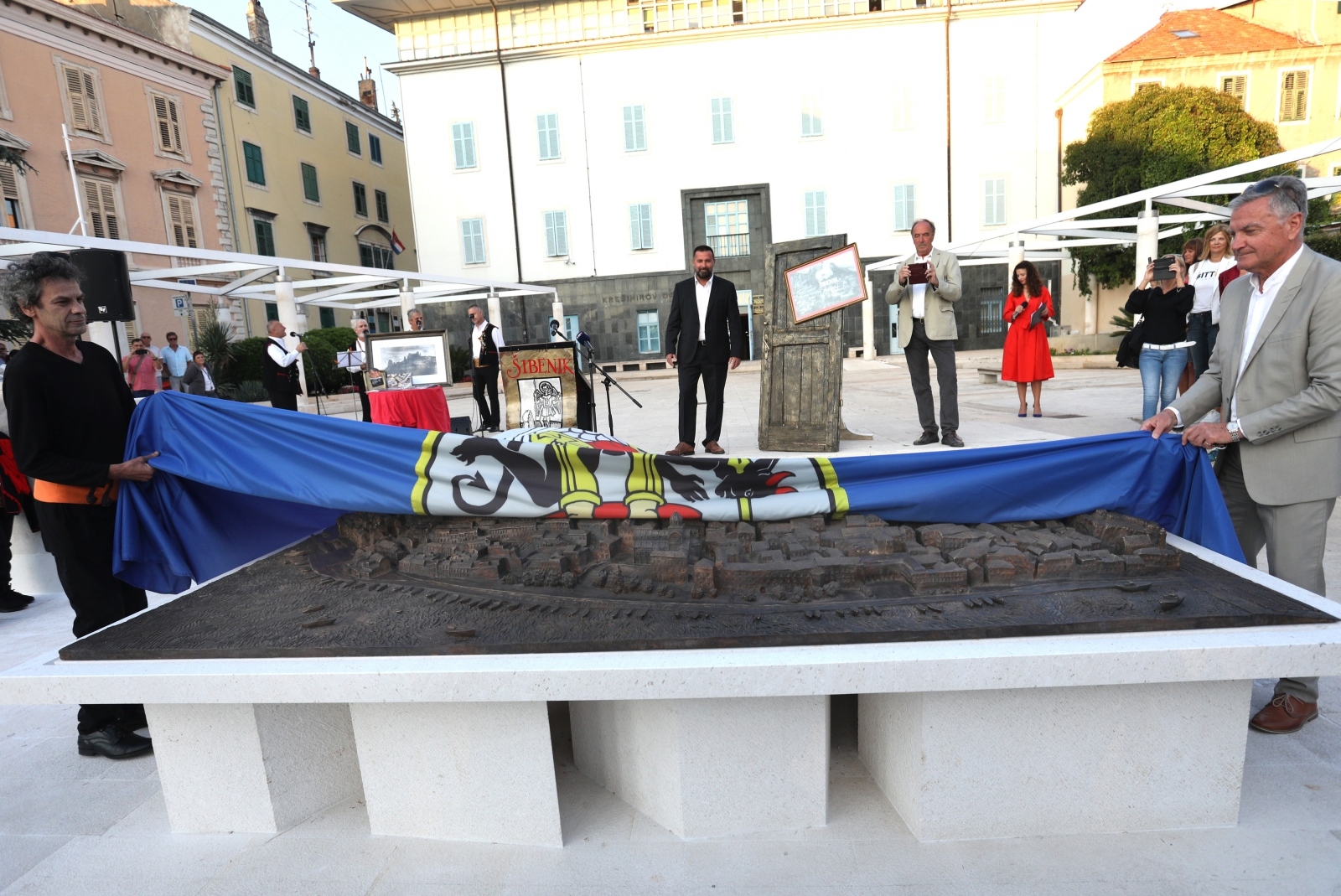
Photo: Dusko Jaramaz/PIXSELL
Other cities have models, mostly industrially processed, but Šibenik got a work of art, high relief, in fact, a sculpture of its historic city center that creates a story of space, brings emotion, and leads the viewer to the old Šibenik streets, rocks, thighs, and squares, points to its historical and cultural heritage as well as the very life of Šibenik, as the mayor of Šibenik Željko Burić said, satisfied that Šibenik is now a part of that life.
The creation of the sculpture, which Vila determined the dimensions of 4x2 meters on a pedestal about 60 centimeters high, was initiated by the Šibenik Tourist Board, and the money was provided from European funds.
''The goal was initially to make a model of the city center as our largest and most valuable resource and potential, as other cities have. However, we decided to give it to our Zvonimir Vila, who made a sculpture out of the model. The process was long, there were technical, financial, and administrative problems, and the pandemic bothered us. The new bronze sculpture of Šibenik is there now and I am overjoyed about it. Šibenik has gained another cultural value and tourist attraction'', said Dino Karađole, director of the Tourist Board.
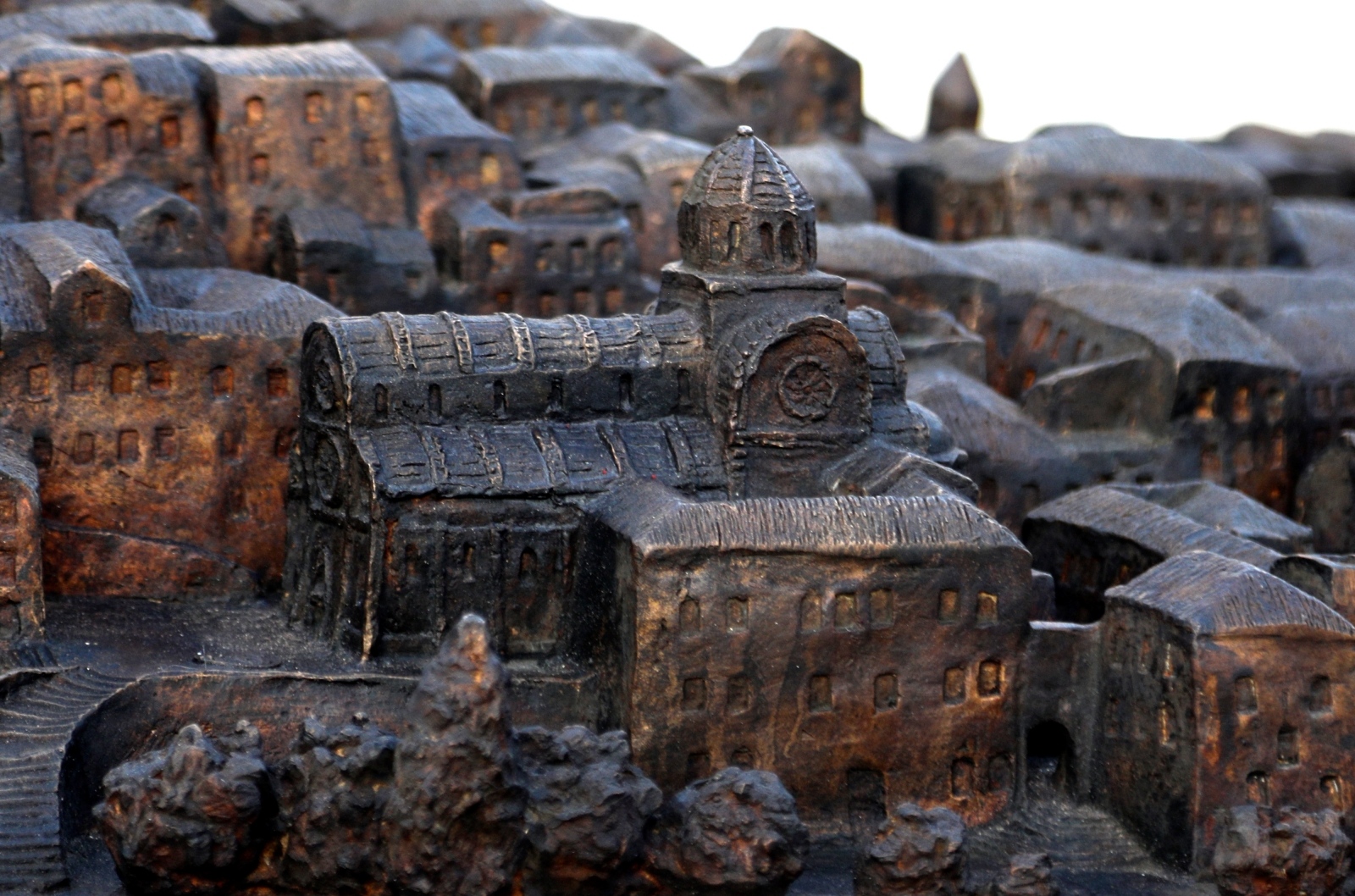
Photo: Dusko Jaramaz/PIXSELL
''I am glad to be in my city tonight and I just told the mayor that I don't recognize anything anymore. Whether it is good or not, I do not know, but I know that this sculpture, it is good that you call it that, and not a model, speaks of the spirit of Šibenik. However, why this sculpture on this day, the feast of St. Michael? Simply because saints personify cities. That symbiotic relationship between a saint and a city, an equation that has been confirmed in a thousand examples. What are St. Vlaho, St. Duje, St. Krševan to Dubrovnik, Split, Zadar, it is St. Mihovil to Šibenik. I think it is a happy choice that this work was given, not so much to the sculptor, but to the graphic artist, because he succeeded in what is most important in Šibenik, and that is the labyrinthine feeling you have in this city of incredible topography. If you were to make a model, 3D, 4D or as it is done today, you would get a good informative picture, but here you have a real work of art'', said the art historian dr. Sc. Josip Belamarić.
''I did this quite emotionally and hard. When I took the job, I knew it wasn’t easy, but it was challenging. The sculpture was made with the classical sculptural technique, first in clay, and later also with the classical method in bronze by his colleague Ante Jurkić, who did a great job of casting'', said Vila, the author, also thanking all of those who supported him in the arduous and long process of creation, especially many citizens and tourists peeking into his studio while he worked.

Photo: Dusko Jaramaz/PIXSELL
Vila also admitted that he would have preferred his work, as originally planned, to be located in Poljana. Nothing is more logical, he says, than for the sculpture of the old town to be in the old town, and not outside its borders, although only 50 meters from Poljana. However, the authors of the architectural-urban project of arranging Poljana did not accept this proposal.
In any case, the people of Šibenik will not be bothered by the location of the new bronze sculpture of Šibenik. A large number of people came to discover the sculpture, and the strong congratulations to Vila and numerous selfies were taken on the first evening near Šibenik stina.
For everything you need to know about the historic city of Šibenik and all things you can do and see, be sure to check Total Croatia's guide: Šibenik in a Page. Now in your language!
For more made in Croatia news, follow TCN's dedicated page.
President Zoran Milanović Visits Wildfire Sites at Seget Gornji
ZAGREB, 4 Aug, 2021 - President Zoran Milanović, accompanied by Chief Firefighting Commander Slavko Tucaković, visited on Wednesday by helicopter locations devastated by wildfires at Seget Gornji, inland from the southern coastal town of Trogir, the President's Office said in a press release.
Before visiting the fire sites, Milanović discussed the situation at wildfire locations at Seget Gornji and in Mirlović in Šibenik-Knin County with local firefighting officials.
Firefighting representatives briefed the president about the efforts firefighters had made so far, and the assistance provided by the Croatian Army.
The president thanked the firemen and all those who helped put out the wildfires.
For more about politics in Croatia, follow TCN's dedicated page.
Construction of €11.6m Harbor in Omiš to Start in Mid-September
ZAGREB, 22 July (Hina) - The construction of a town harbor in Omiš, east of Split, will begin in mid-September, and the implementation of this HRK 87 million project will take three and a half years.
The document signing ceremony for the launch of the project was held in Omiš on Thursday.
In attendance was Sea and Transport Minister Oleg Butković, who said that 85% of the costs of the project would be covered by funds from the European Union.

HINA/Mario Strmotić
The project includes building a primary breakwater and a new promenade, and a new traffic solution.
Currently, about HRK 2 billion is being invested in the projects concerning seaport infrastructure along the coast, a record high investment in this segment in the last 100 years, the minister said.
He commented on efforts to ensure a smooth traffic flow from Solin via Split to Omiš, a route that experiences traffic congestion in the summer, saying that this would also be one of the main Croatian projects in the new EU financial perspective.
The head of the Split-Dalmatia County Port Authority, Domagoj Maroević, said that the new project would provide Omiš with an additional 8,000 square meters of seafront plus 70 berths, as well as space for boats owned by locals.
Mayor Ivo Tomasović said this was a historic day for Omiš, stressing that the new harbor will also enable a connection between Omiš and the nearby islands.
For more news about Croatia, click here.
Flora and Fauna of Dalmatia: Counting Arms of Seastars or Looking for the Good Luck Plant
July 5, 2021 - Swimming in the beautiful and crystalline waters of Croatia, what are the creatures that you are most likely going to meet? And walking around the mountains or the forests, which is the most interesting vegetation and the most unique? This article gives you a brief overview of some of the most interesting flora and fauna of Dalmatia, and how to spot them!
This is the first article written for Total Croatia News by our new contributor, Maria Sole Vespasiano, a molecular biologist living in Split.
Fauna of Dalmatia coastal waters
The waters are populated by many species of fish, mammalians, shells, and more, but you are not going to see all of them from the coast. Sitting on a beach it is not difficult to spot dolphins swimming only a few hundred meters away from the coast. This happens especially when it is not high season yet and ferries, boats, and catamarans are not making the waters too busy for dolphins to feel comfortable enough to appear. Did you know that dolphins can understand approximately 60 words, which can make up to 2000 sentences? They are even able to communicate over the phone! If you are a fan of these beautiful and super-smart animals, in Dalmatia you may have the chance to see them very closely! Another way to see dolphins, and maybe even swim with them, is having a sailing trip a bit further from the coast. In this case, the dolphin watch is almost guaranteed. Their sinuous movement in the waves will be a beautiful memory to take home from your vacation.
Looking around rocks you can find sea stars, and this is way easier on islands! Most likely not everybody knows that sea stars can reproduce by scission of their body. They can also detach one of their “arms” when attacked to be able to escape and save the rest of the body. If you accidentally find one of these sea stars with one shorter (or half of their) arm/s, please do not disturb: either it is recovering from the attack of a predator or a new life is flourishing!
Another water animal that widely proliferates near the Dalmatian coast is the sea urchin. They find their home on the stones, and the backdrop of the Dalmatian coast is made of small or bigger stones, which makes it the perfect location for them. Stepping on one of these sea animals can be very painful! On the other hand, they are also proof of clean waters, because the accumulation of heavy metals disrupts their growth. When you spot them feel lucky to swim in the same water and watch out where you put your feet!
Flora of Dalmatia
The forests and the mountains are often populated by foreign species, especially when these are invasive and they grow faster and easier than the indigenous ones. However, in the Marjan forest in the heart of Split, around 30 endemic species were found. Three of them, in particular, caught my attention during a visit to Marjan hill with experts that are working on a map of all the plants present on Marjan.
The first one is Aurinia leucadea. It is a plant that grows on rocks and has beautiful yellow flowers. It grows mainly in Dalmatia and in some other rare locations of the Mediterranean. They say its name comes from Greek αϋρα that means breeze, wind. In fact, this plant lives on the rocks of mountains in very windy regions, like Dalmatia. The rocky part of the Marjan forest is always fully exposed to the wind, and this creates a perfect environment for this plant.

(Aurinia leucadea; all images taken by the article's author, Maria Sole Vespasiano)
Another interesting one, also from the family of Aurinia is the Aurinia sinuate, an endemic plant that grows only on the Adriatic coast. Its characteristic is that the particular red seeds are protected in little spheres as you can see in the picture below. This plant also blooms yellow flowers, but not in the season I took the picture!

Last but not least, Goniolimon dalmaticum. This plant only grows in Dalmatia and the experts were looking for it in the Marjan forest for weeks. The specimen is the only one they found so far in Marjan park. I challenge you to find it! Many years of luck to the one who will spot it, according to the legend! I will give you a little tip: it is able to grow in an extreme environment, with the high salinity in the soil. Have a look close to the coast!
Find out more about the plant species of Marjan in this article.
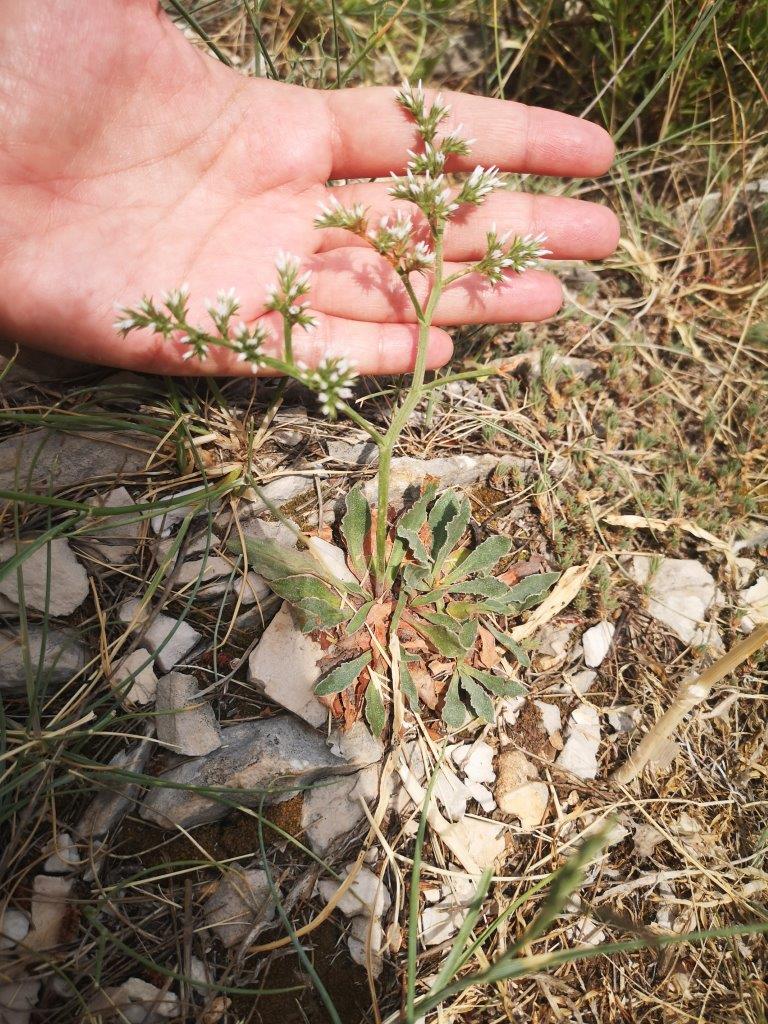
Big thanks to Split Scouts and Igor Belamaric for taking me to Marjan, and explaining the flora of Dalmatia.
93% More Overnight Stays on Hvar and Tourist Crowds on Croatian Islands Increasing
June 27, 2021 - There are 93% more overnight stays on Hvar than last year and crowds are increasingly forming on some of Dalmatia's most popular islands.
Although the European Center for Disease Control (ECDC) has just made Croatia 'green' on the "COVID map" of Europe, which means that according to the strict criteria of the institution, Croatia is among the safest destinations in the context of the coronavirus epidemic, judging by current tourism figures on islands in Split-Dalmatia County, Croatia has been green for a while, reports Slobodna Dalmacija.
Hvar, Brač, and Vis have already been attracting large crowds. Data from the tourist boards of Supetar, Komiža, and Hvar shows a good start to the season, which is expected to be much higher than last year.
"The city of Hvar is currently recording a 93 percent increase in overnight stays compared to June last year, and 36 percent compared to 2019, before the pandemic. According to the forecasts for July and August, we could be around 65 percent compared to the results from 2019," Petar Razović, director of the Hvar Tourist Board, reports optimistically.
Americans, Germans, and French are the most numerous guests in Hvar, while the locals are growing by about ten percent. With school holidays and intensified actions on offer, there will surely be more.
"With the delta variant, the loss of the British tourists is noticeable, we are at about ten percent compared to 2019, but a change in the regime could lead to a slight increase. Our primary goal is to protect the destination because God forbid the delta variant penetrates Hvar. That is why the new conditions for the arrival of British tourists will certainly be announced, both in the whole of Croatia and on our island," Razović announces.
People of Hvar, he says, tried to be as ready as possible for the season, so a large number of private renters responded to the vaccination campaign of the Ministry of Tourism (vaccination on the island is about 54 percent), and they are ready for boaters whose number already suggests that the season could be successful.
"We are even recording an increase compared to 2019! Hvar is this year's top destination for boaters. They come to us from all over Southeast Europe and the surrounding countries, possibly many Italians. Numerous boaters and shipowners have already announced an increased number of arrivals in the port of Hvar at the beginning of July, which indicates that we will continue with significant growth," said Petar Razović.
If Croatia remains "green," Hvar should still see the influx of car guests from Central Europe.
Apartments in Komiža on the island of Vis are also being filled earlier than usual. Bogoljub Mitraković, the director of the local tourist board, says that such a thing could not be said from a cursory glance at eVisitor, in which only five hundred and a few guests were registered yesterday.
"A decent number of people still do not report guests; the inspectorate is as it is. There are house owners, their friends, people who do not live in Komiža but have some connection with the place; there are apartment owners who do not register guests ... Everything. Unfortunately, that's the way it is," says Mitraković, noting that both Vis and Komiža are currently at 73 percent of overnight stays from June 2019.
And they had a relatively well last season with 60-70 percent of arrivals compared to the year before. However, it could have been even better.
"We still have two ferry lines this month. Last weekend there was a collapse ... On Monday morning, I came to buy a ticket for the ferry at 11 am, and there was only one at 6:30 pm. I don't know why Jadrolinija couldn't start driving three times a day a little earlier. It will be a simpler solution to keep people on hold at the ferry port. The Jadrolinija people are kind, but the lines to Vis already needed to be strengthened. They don't do us any favors like this," Mitraković thinks.
Last year, domestic tourists saved the season for Komiža, and now foreigners are slowly returning.
"Poles, Czechs ..., there are a solid number of sailors. The Blue Cave works well. Prices?! Um, a scoop of ice cream in Komiža is 12 kuna. Restaurants? People had to equip themselves, hire staff, and not everything is great every day. We have about thirty percent of renters who do not live on the island. And the same is now with the owners of an increasing number of restaurants," the director of the Komiža tourist board said.
Last weekend brought a bit more tourist activity than usual in Supetar on Brač, where they also expect a significant increase in the number of guests at the beginning of July. So far, they were mostly domestic, along with those from Hungary, Poland, Germany, and Slovenia.
"Currently, there is a minimal number of arrivals of guests from the United Kingdom, and Norway and Sweden, tourists who were among the most numerous in the pre-pandemic period," says Ivan Cvitanić.
"The announcements we have from hotels, but also the private accommodation sector, are good, and reservations have started in a much larger volume in the last few weeks. So, from today's perspective, it seems that this tourist season will be better than last year's, which, despite the pandemic, was very good in the end," Cvitanić says hopefully.
For more about travel in Croatia, follow TCN's dedicated page.


